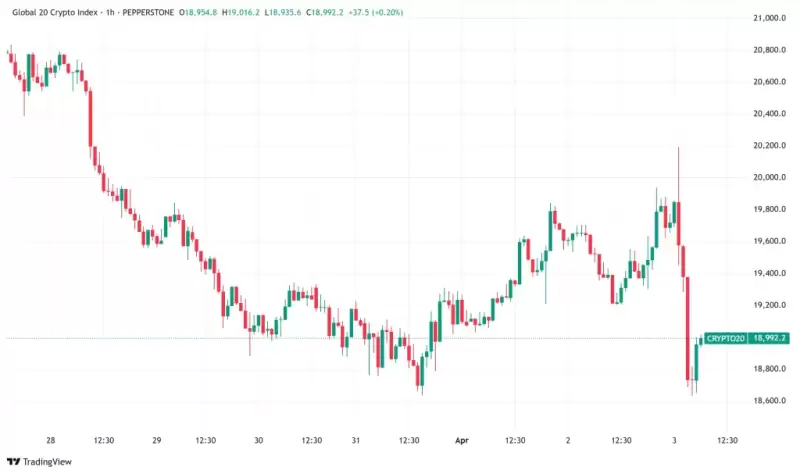 |
|
 |
|
 |
|
 |
|
 |
|
 |
|
 |
|
 |
|
 |
|
 |
|
 |
|
 |
|
 |
|
 |
|
 |
|
向權益證明的轉變引發了人們對過度中心化的擔憂。透過重申其對去中心化的承諾,區塊鏈可以實現其目標

The United States Securities and Exchange Commission dropped charges against the Ethereum blockchain in June 2023, a pivotal moment in the platform’s journey toward greater maturity and acceptance in the financial world.
美國證券交易委員會於 2023 年 6 月撤銷了對以太坊區塊鏈的指控,這是該平台走向更加成熟和被金融界接受的關鍵時刻。
For those who didn’t follow the case, the SEC believed ether (ETH) was sold as an unregistered stock, with concerns that it was being sold without following certain rules and protocols. However, Ethereum’s proponents argued that, since the network is decentralized, it does not meet the criteria of an investment contract or security.
對於那些不關注此案的人來說,美國證券交易委員會認為以太坊 (ETH) 是作為未註冊股票出售的,並擔心它的出售沒有遵循某些規則和協議。然而,以太坊的支持者認為,由於該網路是去中心化的,因此它不符合投資合約或證券的標準。
While the SEC may have decided against direct legal action, it did open the door for further discussions around centralization. Some technological aspects of Ethereum’s architecture have stimulated an important dialogue around contracting power among influential entities. While these discourses are mainly internal, addressing these concerns can enhance the network’s upgrade goals and support true decentralization.
儘管美國證券交易委員會可能已決定不採取直接法律行動,但它確實為圍繞中心化進行進一步討論打開了大門。以太坊架構的某些技術面激發了有影響力的實體之間圍繞契約權力的重要對話。雖然這些討論主要是內部的,但解決這些問題可以增強網路的升級目標並支援真正的去中心化。
This is especially true as the network tries to embody the ideals of “Ethereum 2.0,” the stronger, more accessible, and more practical version of its token and infrastructure. Some say it’s already here, while others point out gaps that still need to be filled to definitively claim its arrival.
當該網路試圖體現「以太坊 2.0」的理想時尤其如此,這是其代幣和基礎設施的更強大、更容易訪問、更實用的版本。有些人說它已經到來,而有些人則指出仍需要填補空白才能明確宣布它的到來。
Yes, Ethereum 2.0 holds significant potential for transforming DeFi and the broader ecosystem, but we can’t just have a foot halfway through the door. To reach its full potential, key developments still have to be reached.
是的,以太坊 2.0 擁有改變 DeFi 和更廣泛生態系統的巨大潛力,但我們不能半途而廢。為了充分發揮其潛力,仍需取得關鍵進展。
Validator centralization
驗證者中心化
By transitioning to a proof-of-stake (PoS) mechanism in September 2022, Ethereum now allows validators to stake ETH, with large stakes increasing validation chances and rewards. This upgrade clearly underscores Ethereum’s key role in DeFi by sparking countless innovative financial tools being created on the network for lending and trading, among other use cases.
透過在 2022 年 9 月過渡到權益證明 (PoS) 機制,以太坊現在允許驗證者質押 ETH,大量質押會增加驗證機會和獎勵。此次升級明確強調了以太坊在 DeFi 中的關鍵作用,並激發了網路上創建的無數創新金融工具,用於借貸和交易等用例。
However, emphasizing token ownership over the number of validators could potentially concentrate power among smaller groups, going against crypto’s ethos of decentralization. Moreover, staking requires an input of 32 ETH, meaning that validators with significant ETH staked can wield disproportionate influence over network governance and decision-making processes. This creates a feedback loop that favors certain participants, and can lead to power and wealth accumulating in the hands of a few individuals.
然而,強調代幣所有權而不是驗證者的數量可能會將權力集中在較小的群體中,這違背了加密貨幣的去中心化精神。此外,質押需要輸入 32 ETH,這意味著質押大量 ETH 的驗證者可以對網路治理和決策過程產生不成比例的影響。這就形成了一個有利於某些參與者的回饋循環,並可能導致權力和財富累積在少數人手中。
In March, Vitalik Buterin even expressed his concerns about “lazy stakers,” or those who engage solely in staking pools rather than solo staking — clearly indicating the relevance of the centralization issue.
今年 3 月,Vitalik Buterin 甚至表達了他對「懶惰的質押者」的擔憂,即那些只參與質押池而不是單獨質押的人——清楚地表明了中心化問題的相關性。
At its core, Ethereum represents a shift in the way financial services are designed, accessed, and utilized. However, relying on a few entities continues to introduce risks and questions about how decentralized Ethereum 2.0 really is.
從本質上講,以太坊代表了金融服務設計、存取和使用方式的轉變。然而,依賴少數實體繼續帶來風險和關於以太坊 2.0 的去中心化程度的問題。
Shifting gears to DeFi
轉向 DeFi
Ethereum’s path towards centralization sets the stage for more severe complications down the line — namely with regulators and reduced network resilience. Ultimately, Ethereum’s future within DeFi and the blockchain ecosystem as a whole hinges on balancing technical advancements while limiting centralization wherever possible. And there are ways to make it achievable.
以太坊走向中心化的道路為未來更嚴重的併發症奠定了基礎——即監管機構和網路彈性的降低。最終,以太坊在 DeFi 和整個區塊鏈生態系統中的未來取決於平衡技術進步,同時盡可能限制中心化。並且有一些方法可以實現這一目標。
If implemented correctly, concepts like rainbow staking could further enhance Ethereum’s adaptability while also combatting centralization. In essence, rainbow staking allows users to stake ETH across multiple pools and strategies simultaneously, effectively creating a “rainbow of rewards”, so to speak, that stakers receive while mitigating anti-competitive risks and building a more resilient ecosystem. The ETH validation process is separated into “heavy” and “light” staking — with “heavy” focusing on validation services for finalization and “‘light” staking zeroing in on censorship resistance of transactions.
如果實施得當,像彩虹質押這樣的概念可以進一步增強以太坊的適應性,同時也可以對抗中心化。從本質上講,彩虹質押允許用戶同時在多個池和策略中質押ETH,可以說,有效地創造了“獎勵彩虹”,質押者在減輕反競爭風險並建立更具彈性的生態系統的同時獲得了回報。 ETH 驗證過程分為「重」質押和「輕」質押-「重」質押著重於最終確定的驗證服務,「輕」質押則著重於交易的審查阻力。
For example, liquid staking protocols like Lido or Rocket could offer heavy service staking, while existing stakers can opt to run light service operators. Rainbow staking will eventually result in a more efficient and competitive network while granting more liquid staking provider diversity. However, executing it won’t be easy and could add confusion to the overall staking structure.
例如,像 Lido 或 Rocket 這樣的流動質押協議可以提供大量服務質押,而現有質押者可以選擇經營輕量級服務業者。 Rainbow 質押最終將帶來更有效率、更具競爭力的網絡,同時賦予質押提供者更具流動性的多樣性。然而,執行起來並不容易,並且可能會給整體質押結構帶來混亂。
Beyond rainbow staking, Ethereum could leverage network-wide advancements already introduced in its initial 2.0 updates, like sharding. While sharding has been scrutinized for its security issues, justifying the shift to Layer 2 and zero-knowledge developments, that doesn’t mean the technology should be outright abandoned.
除了彩虹質押之外,以太坊還可以利用其初始 2.0 更新中已經引入的全網路進步,例如分片。雖然分片因其安全問題而受到審查,證明轉向第 2 層和零知識開發是合理的,但這並不意味著應該徹底放棄該技術。
We have seen evolutions here thanks to developments like “danksharding” specifically for Layer 2s. Danksharding involves proposer-builder separation (PBS), a deviation from how Ethereum validators function now — proposing and broadcasting blocks entirely on their own. Instead, PBS shares the love and splits up these tasks among multiple validators.
由於專門針對第 2 層的「danksharding」等開發,我們在這裡看到了演變。 Danksharding 涉及提議者與建造者分離(PBS),這與以太坊驗證器現在的功能有所不同——完全自行提議和廣播區塊。相反,PBS 分享愛心並將這些任務分配給多個驗證者。
Ultimately, danksharding helps implement data availability, allowing validators to verify blob data quickly and efficiently, while simultaneously identifying missing data.
最終,danksharding 有助於實現數據可用性,使驗證器能夠快速有效地驗證 blob 數據,同時識別遺失的數據。
The aim here is to make transactions on Layer 2 as cheap as possible for users and scale Ethereum to validate over 100,000 transactions per second. This would allow dApps such as Uniswap to process transactions at a significantly lower cost with quicker transaction approval times.
這裡的目標是讓第 2 層上的交易對用戶來說盡可能便宜,並擴展以太坊以驗證每秒超過 100,000 筆交易。這將使 Uniswap 等 dApp 能夠以顯著降低的成本和更快的交易審批時間處理交易。
However, danksharding’s highly technical infrastructure and implementation leave out smaller rollups and potentially encourage centralization. So, while
然而,danksharding 的高技術基礎設施和實施忽略了較小的匯總,並可能鼓勵集中化。所以,雖然
免責聲明:info@kdj.com
所提供的資訊並非交易建議。 kDJ.com對任何基於本文提供的資訊進行的投資不承擔任何責任。加密貨幣波動性較大,建議您充分研究後謹慎投資!
如果您認為本網站使用的內容侵犯了您的版權,請立即聯絡我們(info@kdj.com),我們將及時刪除。
-

- LivePeer將於4月7日舉行社區電話,重點介紹其鏈財政部的治理,資金和戰略方向。
- 2025-04-03 10:35:13
- LivePeer是一項分散的協議,利用以太坊區塊鏈使視頻處理領域民主化。
-

-

- PI網絡未能列入二手列表
- 2025-04-03 10:30:12
- 當Binance列出倡議的投票開始時,該交易所已第二次轉移了PI網絡。
-

-

-

-

-

- 隨著鯨魚的積累,比特幣(BTC)所有權動態變化,較小的持有人卸載
- 2025-04-03 10:20:12
- 來自加密分析公司玻璃節的數據揭示了比特幣(BTC)所有權動態的重大變化。
-




























































